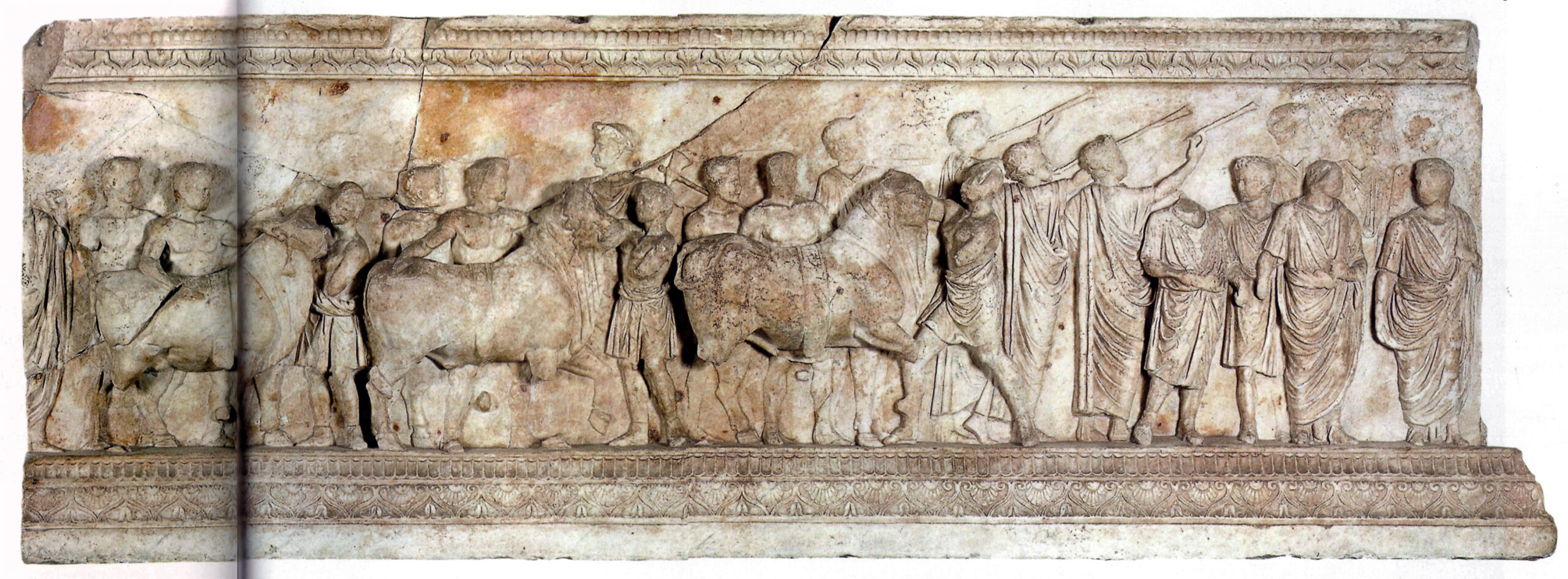Demetrius Poliorketes’ pompe in Eretria
| TITLE: |
| Demetrius Poliorketes’ pompe in Eretria |
| DATE: |
| 294-288 BC |
| TEXT: |
| IG 12.9.207 ANEZIRI, S. (2020): ”Artists of Dionysus: the first professional associations in the ancient Greek world”. In: E. Stewart, E. Harris, & D. Lewis (Eds.), Skilled Labour and Professionalism in Ancient Greece and Rome (pp. 293-312), Cambridge University Press, Cambridge, p. 117, n.13 |
| EDITIONS/TRANSLATIONS: |
| KEYWORDS: |
| Words used to mean procession: |
| συνπονπεύειν (sic) (l. 20, vb. συμπομπεύω, “accompany in a procession”), “Dionysiac procession ara recorder at Chalcis in IG 12.9.207, l.20 and IG 12.9.899c l. 1” (Bakhuizen and Kiel 1985, p. 87) |
| Word used to mean the cult images: |
| Gods or other entities named: |
| τὸν Ἀπόλλω καὶ τὴν Δ[ή]μητρα καὶ τὸν Διόνυσον (l. 11). Cf. “By the early third century BC, musicians and people of the theatre with varied specializations, who participated in the Greek music contests (technitai tou Dionysou), began to organize themselves into associations, which can be deemed as the first professional associations in the Greek world” Aneziri 2020 |
| Description of the cult images: |
| Procession’s route: |
| Frequency with which the procession takes place: |
| Performers: |
| References to the public attending the procession: |
| Rites related to the procession: |
| εἰς τοὺς ἀγῶνας τῶν Διονυσίων καὶ Δημητριείων (l. 18) |
| Allusions to conduct or forms of reverence: |
| Other remarkable elements: |
| It is an epigraphical source, IG 12.9.207, “un long document, connu sous le nom de « loi d’Eubée » et daté entre les années 294 et 288 a.C, offre de précieux renseignements sur l’activité des technites, à une époque quelque peu antérieure ou peut-être même contemporaine à la création des confréries” Aneziri 2020, p. 11 τῶν τραγωιδῶν καὶ κωμωιδῶν ἡμερῶν δέκα (l. 24). Cf. “The Euboean cities have preserved for us the very first law regulating the organisation of the Dionysia (and Demetrieia), with many details of the hire of various artists, including tragic actors” (Gildenhand and Revermann 2010, p. 123) |
| BIBLIOGRAPHY: |
ANEZIRI, S. (2020): ”Artists of Dionysus: the first professional associations in the ancient Greek world”. In: E. Stewart, E. Harris, & D. Lewis (Eds.), Skilled Labour and Professionalism in Ancient Greece and Rome (pp. 293-312), Cambridge University Press, Cambridge, p. 117, n.13 BAKHUIZEN, S. C. and KIEL, M. (1985): Studies in the Topography of Chalcis on Euboea: (a Discussion of the Sources), Brill, Leiden, p. 85 BÖMMER (1952), RE: s.v. Pompa. Herrscher, Vol. XXI.2, p. 1967, n.286 GILDENHAND, I. and REVERMANN, M. (2010): Beyond the fifth century: interactions with Greek tragedy from the fourth century BCE to the Middle Ages, De Gruyter, Berlin/New York, p. 123 Le Guen, B (2001): “Les associations de technites dionysiaques à l’époque hellénistique”, PhD Dissertation PLEKET, H.W. and STROUD, R.S., “SEG 34-896. Eretria. Law of the Euboian confederacy concerning the contracting of Dionysian Artists, 294-288 B.C.”. In: Supplementum Epigraphicum Graecum, Current editors: A. T. E. N. Chaniotis Corsten Stavrianopolou Papazarkadas. Consulted online on 10 November 2021 SAMUEL, A. E. (1972): Greek and Roman chronology: calendars and years in Classical Antiquity, Vol. 1, Beck, München, p. 98 STEPHANIS, I., 1984. Ὁ Εὐβοϊκὸς νόμος γιὰ τὴ μίσθωση τῶν διονυσιακῶν τεχνιτῶν (IG XII 9, 207). EEThess (philol), 22, pp. 499–564 |
